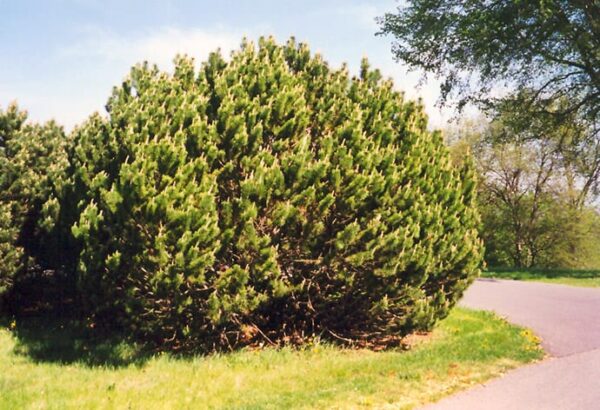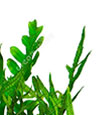Mugo Pine
An extremely hardy and adaptable evergreen, this is actually a highly variable species, almost no two are alike, ranging from small garden detail shrubs to tall, wide trees; many specific cultivars are available, needs full sun.
Please contact your local store for product availability.
Find a garden center near you.
Species: mugo
Other Species Names: Mugho Pine, Swiss Mountain Pine
Plant Height: 240 in.
Spread: 300 in.
Evergreen: Yes
Plant Form: upright spreading
Summer Foliage Color: dark green
Minimum Sunlight: full sun
Maximum Sunlight: full sun
Mugo Pine has dark green foliage. The needles remain dark green throughout the winter. Neither the flowers nor the fruit are ornamentally significant.
Mugo Pine is a dense multi-stemmed evergreen tree with an upright spreading habit of growth. Its average texture blends into the landscape, but can be balanced by one or two finer or coarser trees or shrubs for an effective composition. This is a relatively low maintenance tree. When pruning is necessary, it is recommended to only trim back the new growth of the current season, other than to remove any dieback. It has no significant negative characteristics. Mugo Pine is recommended for the following landscape applications; Accent Mass Planting Hedges/Screening Windbreaks and Shelterbelts
Mugo Pine will grow to be about 20 feet tall at maturity, with a spread of 25 feet. It has a low canopy with a typical clearance of 1 foot from the ground, and is suitable for planting under power lines. It grows at a slow rate, and under ideal conditions can be expected to live for 70 years or more. This tree should only be grown in full sunlight. It prefers dry to average moisture levels with very well-drained soil, and will often die in standing water. It is considered to be drought-tolerant, and thus makes an ideal choice for xeriscaping or the moisture-conserving landscape. It is not particular as to soil type or pH, and is able to handle environmental salt. It is highly tolerant of urban pollution and will even thrive in inner city environments. This species is not originally from North America.



